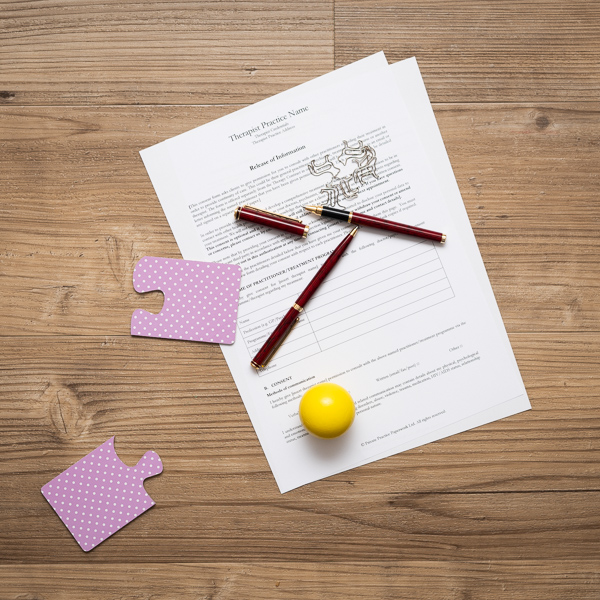PPE and Paperwork Essentials: Stay Compliant and Safe

In the modern workplace, ensuring compliance with safety regulations and maintaining meticulous records isn't just a formality; it's essential for the wellbeing of employees and the legal protection of the organization. This post delves into the critical components of Personal Protective Equipment (PPE) and the paperwork that keeps a business compliant and safe.
What is PPE?

Personal Protective Equipment, commonly known as PPE, encompasses any clothing or equipment designed to protect the wearer from hazards. The range of PPE includes:
- Hard hats
- Safety glasses
- Gloves
- Ear protection
- Respiratory masks
- Safety shoes
- Reflective vests
- Face shields
PPE acts as the last line of defense for workers against workplace dangers that cannot be eliminated by engineering or administrative controls. This ensures that despite all efforts to make the workplace safe, there's an additional safety net for unforeseen hazards.
💡 Note: PPE should be part of a comprehensive safety program that includes hazard assessment, training, and ongoing risk management.
Types of PPE

Eye and Face Protection

This includes safety glasses, goggles, face shields, and welding masks. These items protect against flying debris, chemical splashes, harmful radiation, and other dangers to the eyes and face. Here's a table with some common eye and face PPE:
| Type | Description | Common Use |
|---|---|---|
| Safety Glasses | Side shields or wrap-around styles, may have anti-fog or UV protection | General work environments |
| Goggles | Full seal to protect from particles and liquid entry | Chemical handling |
| Face Shield | Provides full face protection from splashes or projectiles | Grinding, welding |

Head Protection

Hard hats are designed to absorb the impact energy from falling objects and reduce the force transmitted to the skull. They come in various classes:
- Class G (General) - Basic protection
- Class E (Electrical) - Insulated against electric shock
- Class C (Conductive) - No protection against electrical shock
⚠️ Note: Hard hats should fit properly, be worn correctly, and be checked regularly for signs of wear or damage.
Hearing Protection

Earplugs, earmuffs, and canal caps are used to reduce noise levels to a safe threshold:
- Earplugs are disposable or reusable, insert into the ear canal
- Earmuffs cover the entire outer ear
- Canal caps are reusable and provide a one-size-fits-all solution
Hand Protection

Gloves vary widely depending on the nature of the job:
- Chemical-resistant gloves for handling harsh substances
- Cut-resistant gloves for handling sharp objects
- Leather gloves for handling rough materials
- Heat-resistant gloves for heat and fire-related jobs
Foot Protection

Safety shoes range from steel-toed boots to slip-resistant footwear, designed to protect feet from being crushed, punctured, or electrically shocked:
- Steel-toed boots - For protection against heavy impacts
- Puncture-resistant soles - To protect against sharp objects
- Electrical hazard shoes - To shield from electrical current
📌 Note: Selecting the right footwear depends on the specific hazards present in the work environment.
PPE Compliance

Compliance with PPE standards involves several key steps:
- Conduct a Workplace Hazard Assessment: Evaluate potential dangers and identify necessary PPE.
- Select Appropriate PPE: Choose equipment that meets relevant standards and addresses identified hazards.
- Provide Training: Educate employees on the proper use, care, and limitations of PPE.
- Enforce Use: Ensure workers use PPE as required by company policies and regulations.
- Maintain and Replace: Regularly inspect, maintain, and replace damaged or outdated PPE.
Compliance with PPE not only reduces workplace accidents but also minimizes the risk of penalties and legal action if regulations are not followed.
Paperwork Essentials

Maintaining accurate and up-to-date documentation is as critical as providing PPE itself:
Safety Data Sheets (SDS)

SDSs are essential documents that detail chemical hazards, safe handling, emergency procedures, and other safety information. They must be accessible for all chemicals used in the workplace.
PPE Program Documentation

Your PPE program should include:
- Records of hazard assessments
- Selection and justification for chosen PPE
- Maintenance and replacement records
- Employee training records
Accident Reports and Incident Logs

Maintain records of accidents or near-misses to track trends, implement corrective actions, and comply with reporting requirements.
Health Surveillance Records

Documentation of health monitoring for employees exposed to harmful substances or physical stressors is required to ensure early detection of health issues.
Regulatory Compliance Records

Keep records proving compliance with OSHA, NIOSH, ANSI, and other relevant standards. This includes:
- Inspection reports
- Equipment certifications
- Audit results
📖 Note: Proper record-keeping not only protects the company legally but also aids in continuously improving safety protocols.
Integrating PPE and Paperwork

Ensuring safety in the workplace requires the seamless integration of PPE usage with the proper documentation:
- Audit and Review: Regularly audit PPE use and review paperwork for accuracy and completeness.
- Employee Engagement: Encourage a culture where employees understand the importance of both PPE and paperwork.
- Technology Utilization: Use safety management software to automate record-keeping and ensure real-time compliance tracking.
- Feedback and Improvement: Gather feedback from employees on PPE effectiveness and paperwork processes to identify areas for improvement.
When PPE and paperwork are effectively integrated, they not only ensure compliance but also foster a safety-focused workplace culture where employee welfare is paramount.
By providing the right PPE, maintaining comprehensive records, and regularly training staff, companies create an environment where safety is prioritized, reducing the risk of accidents and the potential for regulatory non-compliance issues. This approach not only protects the workforce but also preserves the company's reputation, financial health, and operational continuity.
What does PPE stand for and why is it important?
+PPE stands for Personal Protective Equipment. It’s important because it offers the last layer of defense against workplace hazards that can’t be eliminated through other safety measures.
How often should PPE be inspected and replaced?
+PPE should be inspected before each use, and replacement depends on the wear and tear. Generally, items like gloves or masks might need frequent replacement, while hard hats might last several years if maintained properly.
What documents are necessary to maintain compliance with PPE regulations?
+Essential documents include SDSs, hazard assessments, PPE selection records, training logs, maintenance records, and regulatory compliance reports.



